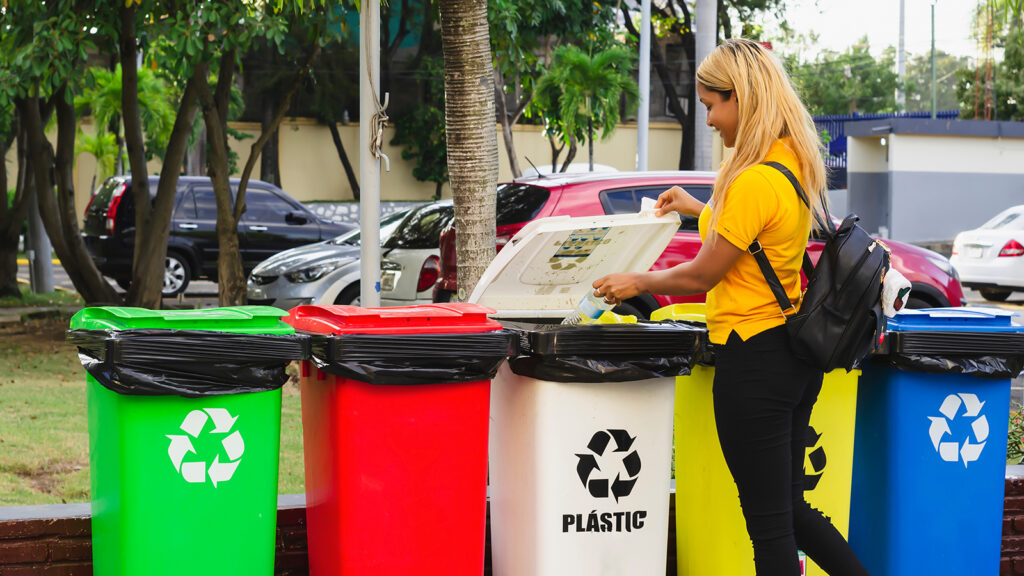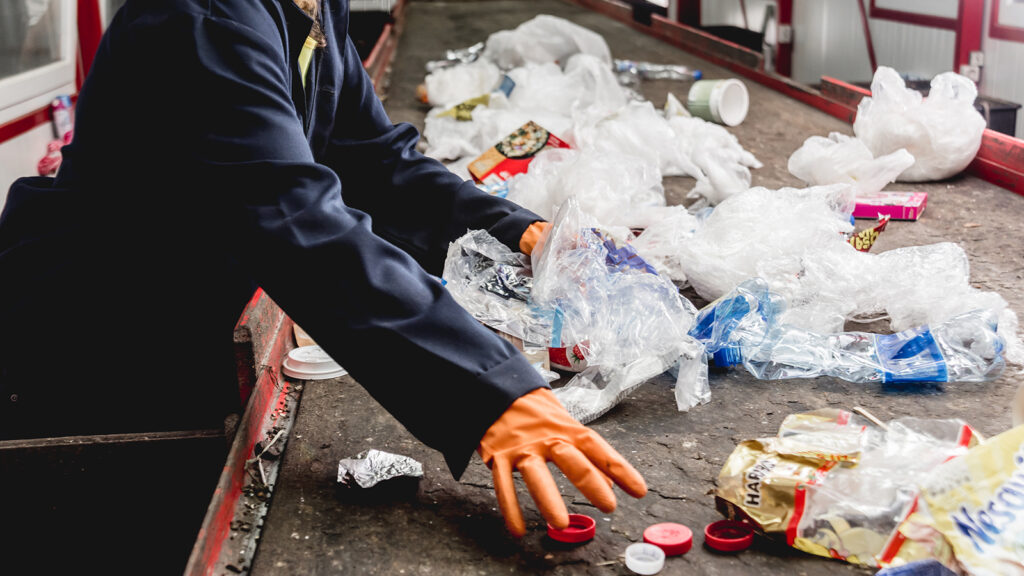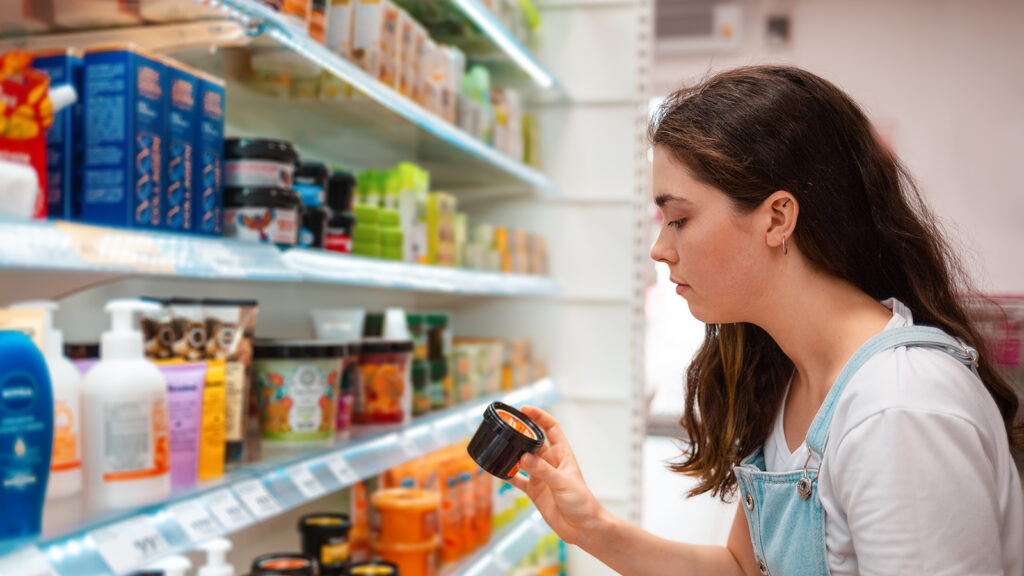The Future of Packaging and Sustainability

Plastic is not yet considered sustainable by many consumers, and this perception is driving a big push to end single use packaging and increase use of paper and other alternatives that people believe they can recycle.
PMMI Study Reveals Consumer Perceptions Shaping CPG Packaging and Laws
By Jorge Izquierdo, Vice President of Market Development for PMMI, The Association for Packaging and Processing Technologies
Consumer concerns about sustainability continue to drive consumer packaged goods (CPG) companies to take a closer look at the materials used to package products – and motivate many of them to commit to improving their sustainability footprint.
According to a new report, “Future of Packaging and Sustainability,” produced by PMMI, The Association for Packaging Technologies, in cooperation with Euromonitor International, 44% of consumers use sustainable packaging and look for features such as: recyclability (52%); biodegradability (49%); and refillable/reusable containers (41%).
More than half of the consumers surveyed (52%) consider recyclable packaging to be sustainable. However, plastic is not yet considered sustainable by consumers, and this perception is driving a big push to end single use packaging and increase use of paper and other alternatives, according to the PMMI report.
The ways CPG companies are tackling sustainability
Several market sectors are influenced by these consumer perceptions of plastic, and brands are making efforts towards the common vision of tackling plastic pollution, according to the PMMI report.
Top manufacturers such as Coca-Cola, Nestle, Mars, SC Johnson, PepsiCo, Ferrero, Berry and The Clorox Company have all made commitments to make sweeping increases in reusable, recyclable, or compostable plastic packaging globally; as well as increased use of post-consumer recycled (PCR) content in plastic packaging by 2025.
Non-alcoholic beverage brands are also moving quickly to recycled plastic, with Coca-Cola introducing the first bottles made from 100% recycled PET (rPET) plastics in the 13.2-ounce size. The company’s target consumers are teens and 18–35-year-olds seeking portion control, as well as “price sensitive 20-ounce shoppers,” suggesting that the smaller, less expensive package size may displace some 20-ounce PET bottles on U.S. shelves.
The report indicates impulse package sizes will continue to shrink for confectionary, snacks and bakery, with smaller multipacks and adjusted price-package mix, simultaneously cutting sugar per serving while boosting the bottom line.
Looking at other categories, there is an effort to build brand equity through commitments to sustainability. In fact, the PMMI study revealed a 22% increase in company’s sustainable packaging claims since the pandemic. For instance, smaller supplement companies are increasingly building messaging around their sustainability commitments.
Refillable and reusable packaging is gaining momentum with CPG brands
Beauty and personal care products are taking the lead in the refillables area. Several category leaders have started offering refillable and reusable options, initially from luxury or direct-to-consumer brands, but now widespread even among well-known mass brands. Refills are useful for beauty companies to overcome recyclability challenges, including the difficulty of recycling mixed-material packaging and smaller components like caps and pumps.
Although plastic continues to be the predominant material in the beauty industry, many leading companies have embraced alternatives, including post-consumer recycled (PCR) materials, recyclable aluminum, and glass, and even in some cases paper/cardboard, bamboo, wood-based, or plant-based packaging.
Sustainability in home care products is also taking shape, with initiatives around packaging leading innovations in recent years. These include refill options for laundry detergent, dishwashing soap, and all-purpose cleaners.
Sustainability presents challenges
Although plastic pouches are convenient and cost-effective, consumers consider plastic to be the least sustainable material, and reducing plastic is a key green focus among consumers. But the move to more sustainable materials is not without challenges for manufacturers.
Recycled materials, while having increased consumer appeal, can also present manufacturing issues due to a lack of steady supply or inconsistent material quality. They can also be more expensive and are not always viable options.
For example, glass is recyclable, but also requires a lot of energy to manufacture. Moving to paper or cardboard can also be cost prohibitive, and factors such as humidity and temperature can pose significant challenges maintaining product quality and package integrity.
There is a clear dichotomy in a world where product appearance is important, but the focus is on reduction – which is very noticeable. For example, in packages such as water bottles. There is a consumer desire for more sustainable packaging, but single use packaging still remains in high demand because it is convenient and hygienic.
While consumers want ‘easy’ and affordable, there is also a place for refill/reuse, if done properly. The report notes examples of this such as Starbucks’ reusable cups and reusable grocery bags.
Key legislative drivers
The PMMI report outlines key legislative drivers intended to increase sustainability in packaging by reducing plastic waste, focusing on circular packaging and decarbonization.
The first state-level legislation concerning plastic in the U.S. was the August 2020 bottle bill, stipulating 15% recycled content by 2022, and 50% by 2030. Maine and Oregon became the first U.S. states to introduce Extended Producer Responsibility (EPR) on plastic packaging in 2021, and Packaging EPR programs are continuing to ramp up at the state level across the U.S.
Globally, EPR measures vary at regional and national levels, but broadly target material recyclability, recovery, and rates of recycled content. Plastic waste shipment bans further exert pressure to locally handle waste created.

Increasing sustainable material use and recycling rates are the impetus behind most environmental laws and policies regulating packaging materials and waste disposal.
Global initiatives are focused on recycling, circularity and decarbonization
A movement is underway to create a circular economy for all packaging, from eco-friendly design to re-use, which is affirmed by legislation and corporate initiatives. For example, many 2025/2030 corporate sustainability pledges align with global initiatives such as the EU Circular Economy Action Plan.
Increasing sustainable material use and recycling rates are the impetus behind most environmental laws and policies regulating packaging materials and waste disposal. In fact, more countries and regions are using EPR and deposit return systems to advance the sustainability movement.
The rise in country and regional commitments to meet net-zero carbon emissions by 2050 align with the 1.5 C Paris Agreement of 2015 and Glasgow Climate Pact of 2021. These agreements are shaping national laws and the environmental goals of brand users and packaging producers/converters — making it a global priority to focus on renewable and recycled substrates, and conversion from fossil fuels to renewable-powered operations.
PACK EXPO Las Vegas Features Sustainable Solutions
These types of commitments from top manufacturers are leading the industry toward a more sustainable future. PACK EXPO Las Vegas (Sept. 11-13, 2023; Las Vegas Convention Center, Las Vegas) is the place to see the latest in sustainable solutions in packaging materials, machinery, and technology in action.
The PACK EXPO Green program is the commitment of PACK EXPO and all its partners, vendors, and exhibitors working together to create a more sustainable world. Attendees can find information and resources to aid and advance their company’s unique sustainability goals with the PACK EXPO Sustainability Solutions Finder. For more information about PACK EXPO Las Vegas, go to www.packexpolasvegas.com.
About the Author
Jorge Izquierdo is vice president of market development for PMMI, The Association for Packaging and Processing Technologies. He is a mechanical engineer by training, and currently oversees PMMI’s market development plans, research and programs for strengthening the competitiveness of North American suppliers of packaging and processing equipment. Download the full report at https://www.pmmi.org/report/2022-future-packaging-and-sustainability.








